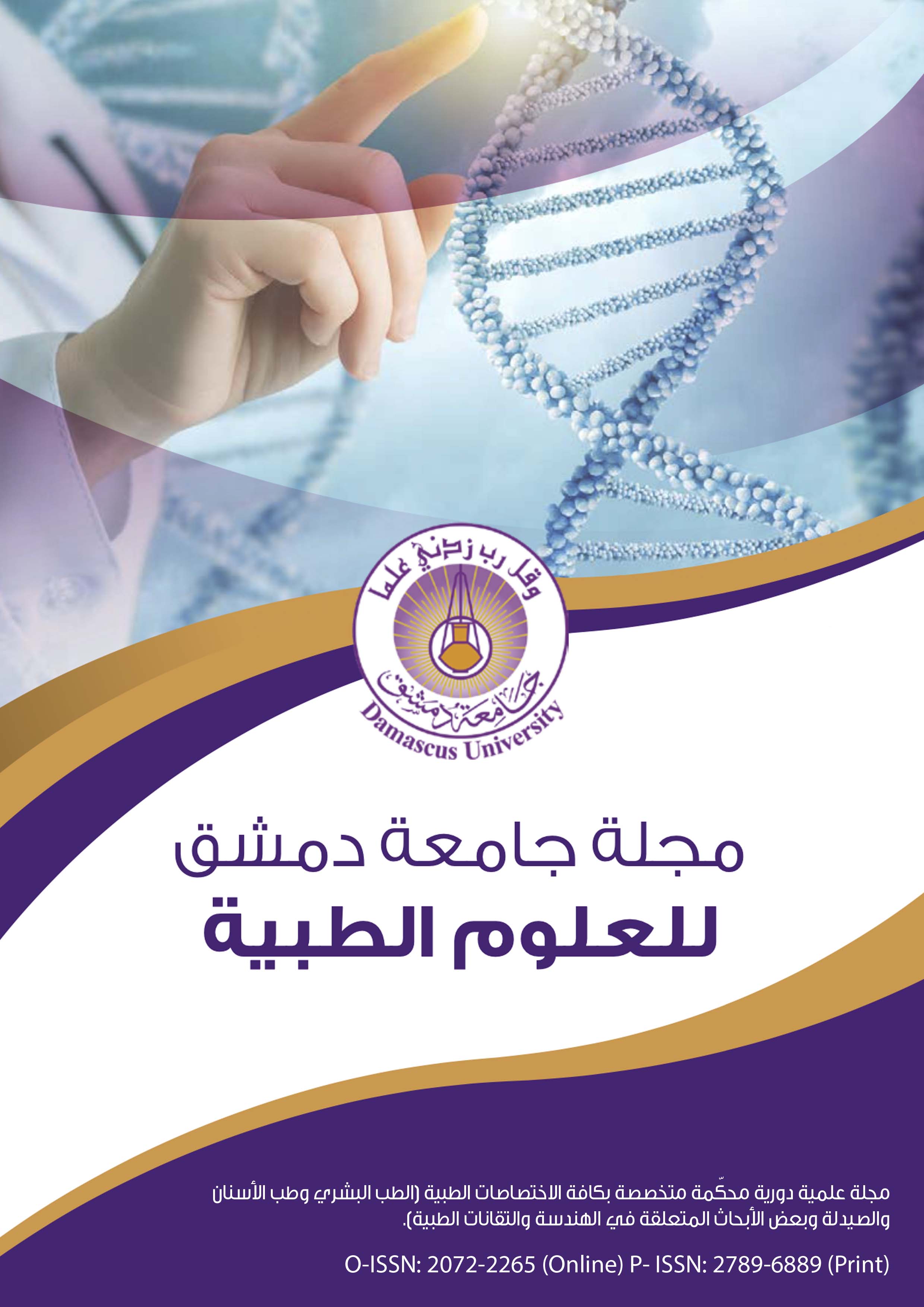The prevalence of tooth erosion in 16 – 17 -year-old school students in Damascus and its correlation with gender
Keywords:
Prevalence, Dental Erosion, Adolescents, CorrelationAbstract
Introduction: Dental Erosion (DE) is a non-carious lesion represented by the gradual and irreversible loss of hard tooth tissue due to decay caused by internal or external acids. The damage from dental erosion is non-response and requires frequent and increasingly complex treatment procedures. Various epidemiological studies focusing on the prevalence or etiology of DE in adolescents have recognized this age group as most at risk due to its dietary behaviors.
Aim of the Study: The aim of this study was to assess the prevalence of dental erosion and to study the potential associations between dental erosion and gender of a sample of adolescents in Damascus.
Materials and Methods: The study sample consisted of 396 adolescents, aged 16 to 17 years. All individuals were clinically examined and answered questions regarding their medical history, rate and frequency of drinks and food consumption and lifestyle habits. Erosion was assessed with BEWE (Basic Erosive Wear Examination) index. Data were analyzed using Statistical Package for Social Sciences program (SPSS).
Results: The results showed the presence of dental erosion in 145 individuals, which is equivalent to 36.6% of the sample. The degree of risk within the entire sample was distributed between 83.8% of the sample members without risk, 14.6% of the sample members of low risk, and 1.5% of the sample members of medium risk. The results showed a correlation between erosion and gender (P = 0.00) as males had more erosion than females.
Conclusions: Teeth erosion was found in 36.6% of the sample, which is equivalent to approximately one third of the sample. Therefore, erosion is a problem in this age group.
Key Words: Prevalence, Dental Erosion, Adolescents, Correlation.

